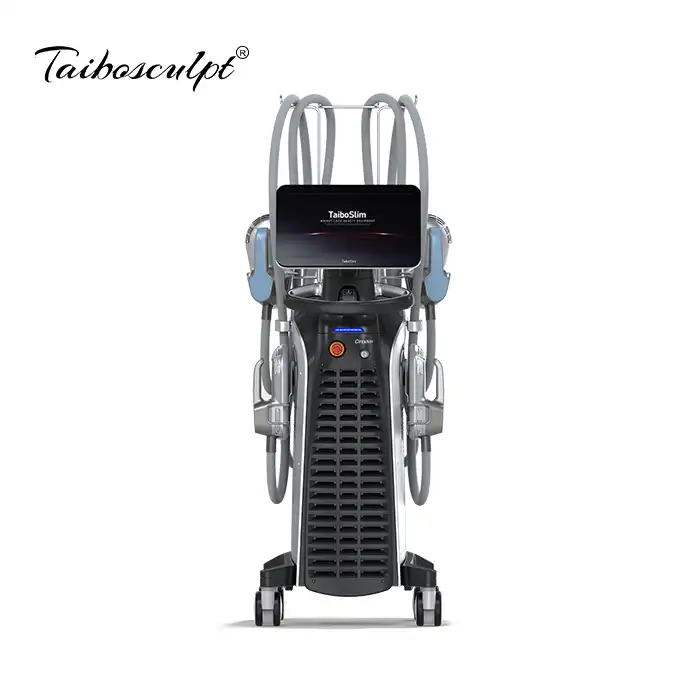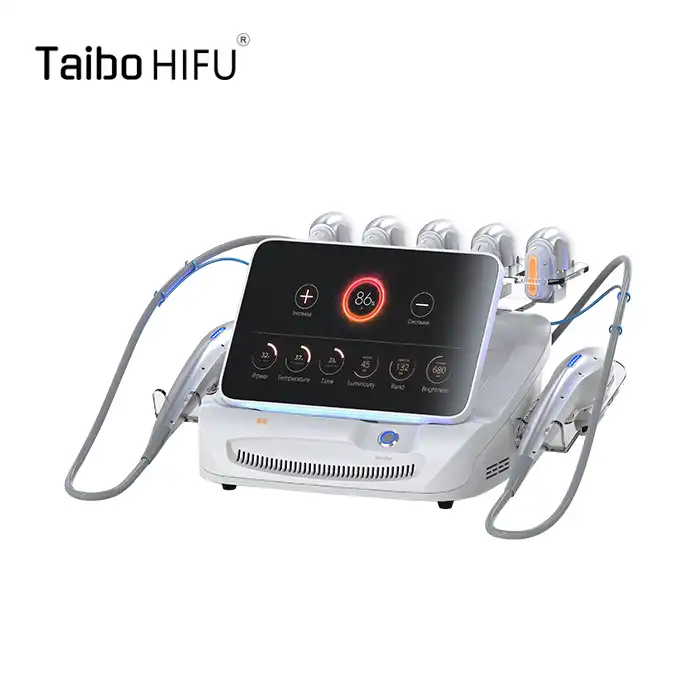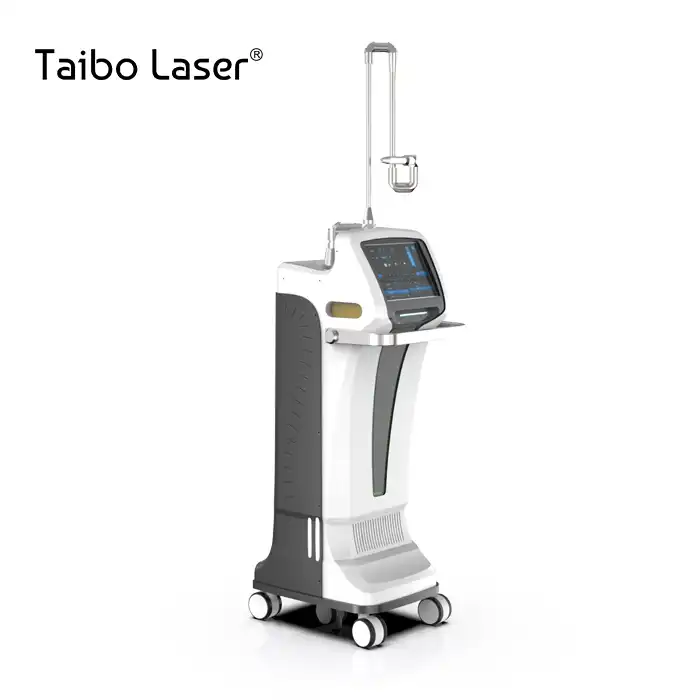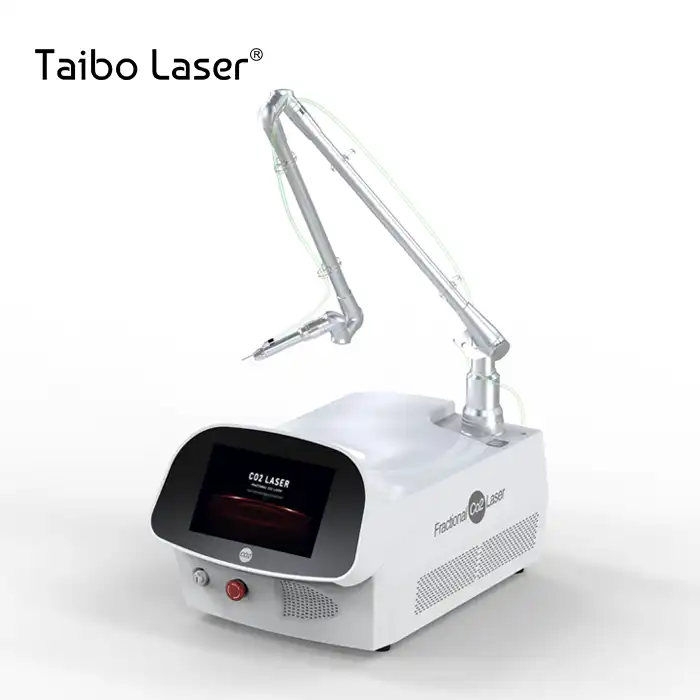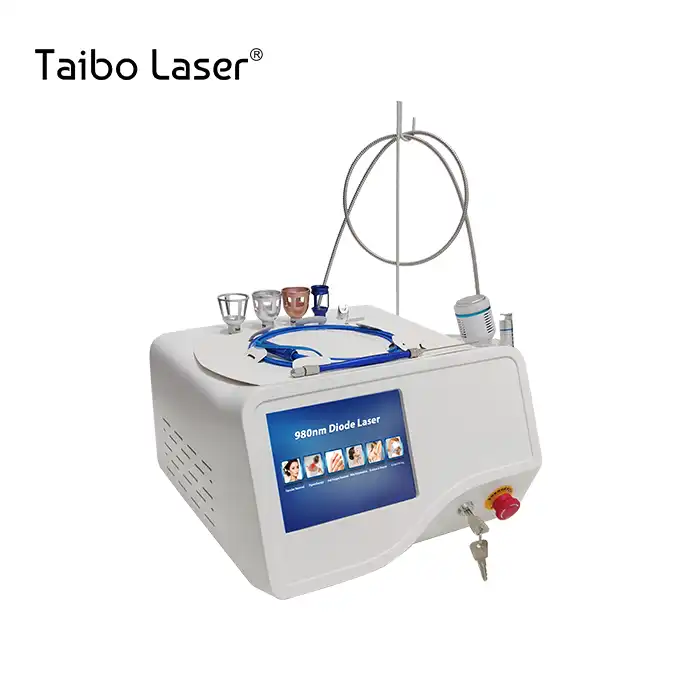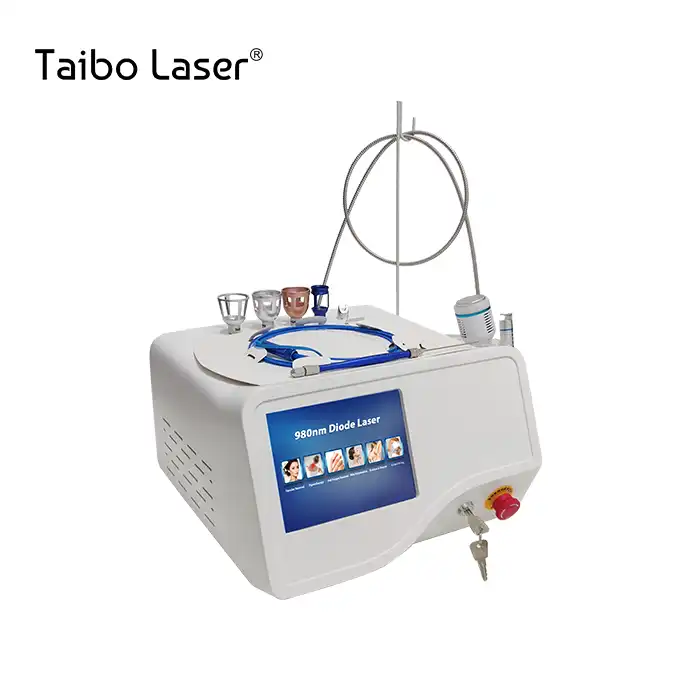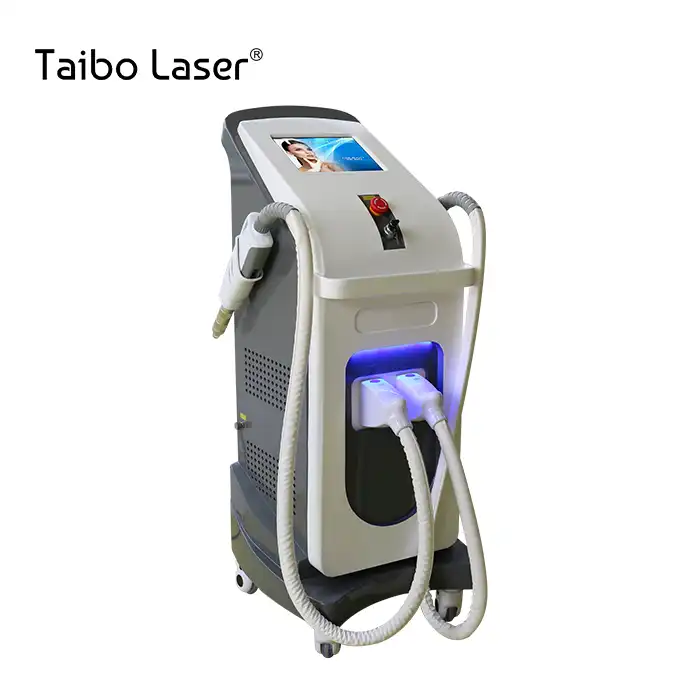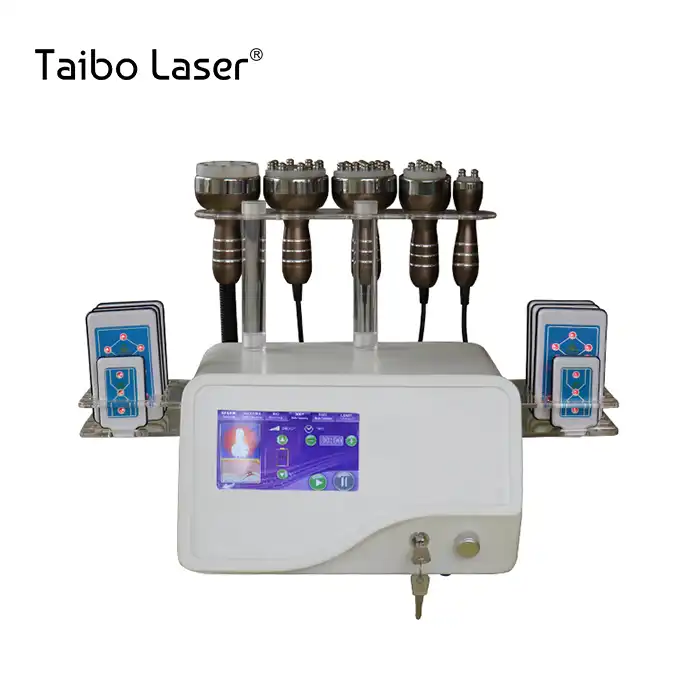
What is the ND YAG Q-Switched laser used for?
2025-03-21 09:18:46
The ND YAG Q-Switched laser machine is a versatile and powerful tool in the realm of aesthetic treatments and dermatology. This advanced technology utilizes a neodymium-doped yttrium aluminum garnet (Nd:YAG) crystal to produce high-energy, short-duration laser pulses. The Q-switched mechanism allows for extremely brief, intense bursts of light energy, making it particularly effective for targeting pigmented lesions and unwanted tattoos. The nd yag q switch laser machine excels in various applications, including skin rejuvenation, tattoo removal, and treatment of pigmentation issues such as melasma, freckles, and age spots. Its ability to deliver precise, concentrated energy without damaging surrounding tissues has made it a go-to solution for dermatologists and aesthetic professionals worldwide. The non-invasive nature of this treatment, combined with its efficacy, has contributed to its growing popularity among patients seeking safe and effective solutions for their skin concerns.
Applications and Benefits of ND YAG Q-Switched Laser Treatment
Tattoo Removal
One of the primary applications of the nd yag q switch laser machine is tattoo removal. This innovative technology has revolutionized the process of eliminating unwanted ink from the skin. The Q-switched laser emits short, high-energy pulses that shatter tattoo pigments into tiny particles, which are then naturally eliminated by the body's immune system. This method is particularly effective because it can target specific colors without causing significant damage to the surrounding skin tissue. The ND YAG Q-Switched laser is especially adept at removing dark ink colors such as black, blue, and green. Its versatility allows it to treat a wide range of tattoo types, from professional to amateur, and even some cosmetic tattoos. The treatment process typically requires multiple sessions, with the number depending on factors such as tattoo size, color, and depth of ink placement. Patients appreciate the gradual fading of their tattoos, which often results in complete or near-complete removal with minimal scarring. Moreover, the precision of the nd yag q switch laser machine enables practitioners to target specific areas of a tattoo, making it possible to remove only parts of a design if desired. This level of control is particularly valuable for those looking to modify existing tattoos or remove small, unwanted elements from larger pieces.
Pigmentation Treatment
Another significant application of the ND YAG Q-Switched laser is the treatment of various pigmentation issues. This includes conditions such as melasma, sunspots, freckles, and age spots. The laser's ability to target melanin, the pigment responsible for skin color, makes it an excellent choice for addressing these concerns. When treating pigmentation, the nd yag q switch laser machine works by breaking down the excess melanin in the affected areas. The laser energy is absorbed by the pigmented cells, causing them to fragment into smaller particles. These particles are then gradually removed by the body's natural processes, resulting in a more even skin tone. The treatment is particularly effective for superficial pigmentation issues, but it can also address deeper pigmentation with multiple sessions. Patients often notice a significant improvement in their skin's appearance after just a few treatments, with continued enhancement over time. The non-invasive nature of the procedure means minimal downtime, allowing individuals to return to their daily activities almost immediately.
Skin Rejuvenation
Past tattoo expulsion and pigmentation treatment, the ND YAG Q-Switched laser has picked up acknowledgment for its skin restoration capabilities. This flexible machine can move forward by and large skin surface, diminish the appearance of fine lines and wrinkles, and advance collagen generation for a more young complexion. The laser vitality fortifies the more profound layers of the skin, activating a normal mending response. This prepare energizes the generation of modern collagen and elastin strands, which are fundamental for keeping up skin flexibility and firmness. As a result, patients frequently involvement made strides skin surface, decreased pore estimate, and a more brilliant complexion. The nd yag q switch laser machine's capacity to target particular skin layers without harming the surface makes it an amazing alternative for those looking for delicate however successful skin restoration. The treatment can be customized to address person concerns, whether it's generally skin tone change or focusing on particular zones of concern.
How the ND YAG Q-Switched Laser Works
Laser Technology Principles
The ND YAG Q-Switched laser operates on principles of selective photothermolysis, a concept that revolutionized laser treatments in dermatology. This technology allows the laser to target specific chromophores (color-bearing particles) in the skin while minimizing damage to surrounding tissues. The "Q-switched" aspect refers to a special technique that produces extremely short, high-energy pulses of laser light. In the nd yag q switch laser machine, a neodymium-doped yttrium aluminum garnet crystal is used as the lasing medium. When stimulated, this crystal emits light at a wavelength of 1064 nm, which is particularly effective for penetrating deeper layers of skin. The Q-switching mechanism involves a device that prevents the laser from emitting light until a large amount of energy has built up. When released, this energy creates a very brief, intense pulse of light. This unique combination of wavelength and pulse duration makes the ND YAG Q-Switched laser highly effective for various dermatological applications. The short pulse duration ensures that the laser energy is absorbed by the target tissue before it can spread to surrounding areas, minimizing collateral damage and improving treatment precision.
Energy Delivery and Absorption
The effectiveness of the nd yag q switch laser machine lies in its ability to deliver energy in a way that is optimally absorbed by the target tissues. When the laser light is emitted, it penetrates the skin and is selectively absorbed by specific chromophores, such as melanin in pigmented lesions or ink particles in tattoos. The absorption of laser energy causes rapid heating of the target particles. This sudden temperature increase leads to photoacoustic and photothermal effects, essentially shattering the particles into smaller fragments. These microscopic fragments are then more easily eliminated by the body's natural processes, including phagocytosis by immune cells. The precise control over energy delivery allows practitioners to adjust the treatment parameters based on the specific condition being treated, the patient's skin type, and the desired outcome. This level of customization ensures that each treatment is tailored to the individual, maximizing efficacy while minimizing the risk of side effects.
Tissue Interaction and Healing
The interaction between the ND YAG Q-Switched laser and skin tissue is a complex process that extends beyond the immediate treatment effects. While the primary action of the laser is to target specific chromophores, the surrounding tissue also experiences beneficial changes that contribute to overall skin health and appearance. When the nd yag q switch laser machine delivers its energy pulses, it creates controlled micro-injuries in the skin. These micro-injuries stimulate the body's natural healing response, triggering increased collagen and elastin production. This process, known as neocollagenesis, is crucial for improving skin texture, reducing the appearance of fine lines, and enhancing overall skin firmness. Additionally, the laser treatment can improve local blood circulation and lymphatic drainage in the treated areas. This enhanced circulation helps to nourish the skin cells and accelerate the removal of fragmented pigment particles or tattoo ink. The result is not only the resolution of the specific issue being treated but also an overall improvement in skin health and appearance.
Safety Considerations and Treatment Protocols
Patient Selection and Preparation
Guaranteeing the security and viability of ND YAG Q-Switched laser medications starts with legitimate understanding choice and preparation. Practitioners must conduct careful discussions to survey each patient's reasonableness for the treatment, taking into account variables such as skin sort, therapeutic history, and particular concerns. The nd yag q switch laser machine is for the most part secure for utilize on a wide run of skin sorts, much obliged to its capacity to enter profoundly without altogether influencing the epidermis. However, certain safety measures must be taken for patients with darker skin tones to minimize the hazard of post-inflammatory hyperpigmentation. Additionally, patients with a history of keloid scarring or certain therapeutic conditions may require extraordinary thought or elective treatments. Proper planning is vital for ideal comes about and minimized dangers. This ordinarily includes giving patients with nitty gritty pre-treatment enlightening, which may incorporate dodging sun presentation, suspending certain skincare items, and abstaining from other stylish medications for a indicated period some time recently the laser session. Patients ought to moreover be taught approximately the anticipated results, potential side impacts, and the significance of following to post-treatment care enlightening.
Treatment Parameters and Techniques
The effectiveness and safety of ND YAG Q-Switched laser treatments heavily depend on the precise selection and application of treatment parameters. Skilled practitioners must consider various factors when setting up the nd yag q switch laser machine for each session, including the patient's skin type, the condition being treated, and the specific area of the body. Key parameters that may be adjusted include: - Fluence (energy density) - Spot size - Pulse duration - Treatment frequency. These settings are carefully calibrated to deliver optimal results while minimizing the risk of adverse effects. For instance, higher fluence levels may be used for tattoo removal on lighter skin types, while lower settings might be employed for treating pigmentation issues in patients with darker skin tones. Treatment techniques also play a crucial role in ensuring safety and efficacy. Practitioners must employ proper handpiece manipulation, maintain appropriate distance and angle to the skin, and use overlapping patterns when necessary to ensure even coverage. The application of cooling methods, such as cold air or contact cooling devices, can enhance patient comfort and protect the epidermis during treatment.
Post-Treatment Care and Follow-up
The care provided after ND YAG Q-Switched laser treatments is vital for ensuring optimal healing and results. Patients should be given comprehensive post-treatment instructions to follow in the days and weeks following their session with the nd yag q switch laser machine. Commonplace post-treatment care may incorporate: - Applying cold compresses to diminish swelling and distress - Utilizing delicate, non-irritating skincare items - Maintaining a strategic distance from sun presentation and utilizing high-SPF sunscreen - Abstaining from picking or scratching treated ranges - Keeping the skin moisturized to back healing
Follow-up arrangements are basic for checking advance and altering treatment plans as needed. These visits permit specialists to evaluate the skin's reaction to the treatment, address any concerns, and make educated choices almost consequent sessions. The interim between medications can shift depending on the condition being treated and the individual's reaction, but ordinarily ranges from 4 to 8 weeks. Long-term follow-up is especially imperative for medications like tattoo evacuation, where numerous sessions are frequently required to accomplish wanted comes about. Regular assessments help ensure that the treatment plan remains on track and that any potential complications are addressed promptly.
Conclusion
The ND YAG Q-Switched laser has established itself as a versatile and effective tool in the field of aesthetic medicine. Its ability to address a wide range of skin concerns, from tattoo removal to pigmentation issues and skin rejuvenation, makes it an invaluable asset in many dermatological practices. As technology continues to advance, we can expect further refinements in nd yag q switch laser machine capabilities, potentially expanding its applications and improving treatment outcomes even further. If you want to get more information about this product, you can contact us at susan@taibobeauty.com.
References
1. Anderson, R. R., & Parrish, J. A. (1983). Selective photothermolysis: precise microsurgery by selective absorption of pulsed radiation. Science, 220(4596), 524-527.
2. Goldberg, D. J. (2012). Laser dermatology: pearls and problems. John Wiley & Sons.
3. Kossida, T., Rigopoulos, D., Katsambas, A., & Anderson, R. R. (2012). Optimal tattoo removal in a single laser session based on the method of repeated exposures. Journal of the American Academy of Dermatology, 66(2), 271-277.
4. Nouri, K. (Ed.). (2011). Lasers in dermatology and medicine. Springer Science & Business Media.
5. Tanzi, E. L., Lupton, J. R., & Alster, T. S. (2003). Lasers in dermatology: four decades of progress. Journal of the American Academy of Dermatology, 49(1), 1-34.
6. Weiss, R. A., & McDaniel, D. H. (2008). Laser surgery of the skin: aesthetic and medical applications. Elsevier Health Sciences.
YOU MAY LIKE













